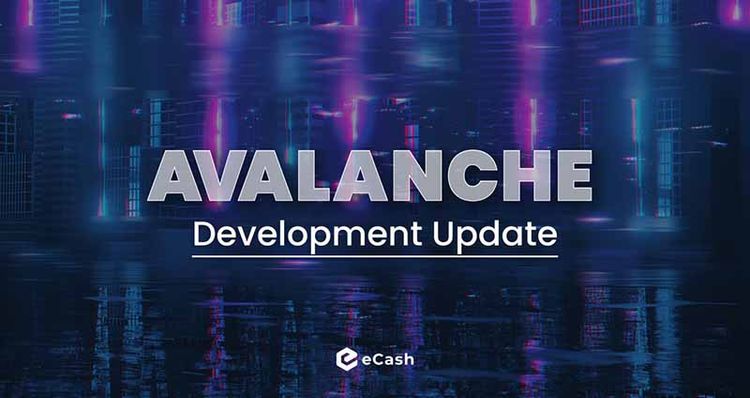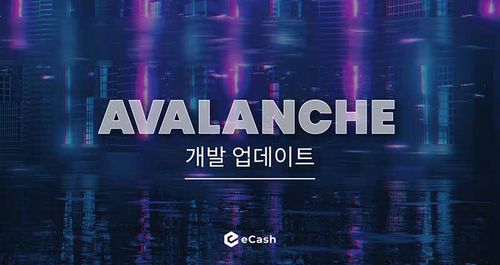For the past year, and more, the Bitcoin ABC team has been working to implement the Avalanche protocol on eCash. The website avalanche.cash was created in order to give more transparency into the work being done, show the steps completed and give a sense of the future roadmap and milestones.
About a month ago, the roadmap items leading up to the Post-consensus milestone turned green, and the eCash project announced that the Avalanche post-consensus implementation had reached Incubating status.
The purpose of this blog post is to explain what this means, and give some more information and context on the work being done.
What is happening during the “Incubating” period?
Incubating is a period where the Avalanche post-consensus features are feature-complete, but still require testing and shakeout by the team.
Since the Incubating period started, Bitcoin ABC has been doing repeated rounds of testing of the Avalanche features of the node. These tests have uncovered some issues that need to be fixed and areas where it needs to be made more robust. While this takes additional time and work, the good news is that the resulting Avalanche implementation is becoming more resilient against potential attacks.
Some fixes made during the Incubation period are:
- Increase outbound network connection numbers so that nodes can become more connected to the network (D11360, D11361).
- Close some potential Denial of Service vectors (11364).
- Fix poll-only mode, so that non-staking nodes can get the information needed to poll Avalanche nodes (D11363, D11365).
- Fix bootstrap heuristic calculation to account for own Proof (D11367).
- Actively request Proofs from a variety of nodes on the network, in particular during bootstrap. This is needed to have good assurance that the node can bootstrap in a decentralized way, with similar trust assumptions to current (ie, it should work as long as there is a connection to one honest node). This is currently work in progress.
Anyone interested in more development details can have a look at Bitcoin ABC development activity here.
The incubating period is also a time to prepare mainnet Avalanche nodes to ensure sufficient quorum for the launch on Mainnet. It is important to have enough nodes and staked coins. This will set up the network for success.
What will happen after the Incubating period?
After the Incubating phase, the Avalanche Post-Consensus will be considered live on the eCash network. This means that there will be sufficient nodes running the protocol, with sufficient XEC staked, for the protocol to run reliably and securely.
Additionally, a version of Bitcoin ABC node software will be released that includes the -avalanche parameter as a standard node-configuration option. This means that Avalanche Post-Consensus will be ready for anyone on the eCash network to use. It will still be off-by-default, and considered an optional feature.
What is Post-Consensus?
Post-Consensus is named that way because it is dealing with blocks after they are produced by miners. By contrast, Pre-Consensus is when the Avalanche protocol is used by nodes to come to consensus on transactions before blocks are produced.
With Avalanche Post-Consensus, nodes can come to consensus on the current live status of blocks that are visible on the eCash network. In other words, it allows nodes to know that the blocks they see are also accepted by the rest of the network. This information can then be used to defend the network against block withholding attacks, and blockchain reorganization attacks.
After Pre-Consensus is implemented in Bitcoin ABC, Post-Consensus will also be used to reject blocks that include transactions that conflict with transactions that were finalized via Pre-Consensus. This will allow users of the eCash network to benefit from near-instant transaction finalization, with confidence that finalized transactions cannot be reversed.
What comes next?
In the coming weeks, more information and tutorials about how to run Avalanche Post-Consensus will be released.
Looking farther ahead, the next milestone for Post-Consensus will be to make the protocol run “on-by-default” in the node’s configuration settings. This will be activated after sufficient monitoring of Avalanche Post-Consensus running as an optional setting, and it has proven to be reliable and stable.
In the meantime, development of further eCash Avalanche capabilities continues. Upcoming capabilities include Pre-Consensus for near-instant transaction finality, and staking rewards.
For more info and to monitor development progress, see Avalanche.cash.
About Avalanche
Using a fast consensus protocol to do Pre-Consensus has been a long-standing item on the eCash Roadmap (and previously on the Bitcoin Cash roadmap). This is one of the improvements needed to power eCash to be a competitor and alternative to Central Bank Digital Currencies (CBDCs). When the Avalanche whitepaper appeared in 2018, eCash founder Amaury Séchet, and the Bitcoin ABC team, recognized that this new protocol was what they had been searching for, as it fulfilled the needed requirements.
It should be noted that eCash’s Avalanche implementation is completely separate and distinct from the AVAX Avalanche project. They have no connection, other than both using the protocol described in the Avalanche whitepaper. In the case of eCash, Avalanche consensus is used for fast and live consensus needs, such as fast transaction finality. Proof-of-work based Nakamoto consensus is retained where it is superior, providing objective consensus criterion to enable decentralized node bootstrapping.
Adding the Avalanche protocol has been long and technically challenging work. It is an entirely new consensus protocol which had to be implemented from scratch by the Bitcoin ABC team. While there are still many steps remaining to realize the full benefits of the Avalanche protocol, the launch of Post-Consensus on the eCash mainnet is a significant achievement, and a solid foundation for further enhancements to build upon.



